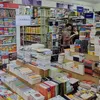Cultural and economic impact: Kolkata’s Durga Puja as one of the world’s largest public art festivals
In our second photo essay from Kolkata, we showcase more of the stunning Durga Puja installations along with expert insights.
Launched in 2014, PhotoSparks is a weekly feature from YourStory, with photographs that celebrate the spirit of creativity and innovation. In the earlier 810 posts, we featured an art festival, cartoon gallery. world music festival, telecom expo, millets fair, climate change expo, wildlife conference, startup festival, Diwali rangoli, and jazz festival.
In Part I of our photo essay from Kolkata, we showcased some of the outstanding design, art and craftworks at the Durga Puja pandals. In addition to home celebrations with idols and pujas, neighbourhoods across the city hold community celebrations at pandals.

There are also much larger art installations that are funded by corporates and community support. They provoke audiences to ponder about and commit to causes like environmental sustainability, preservation of local traditions, social change, and political reform.
In this two-part photo essay, we showcase some of the community pandals of Barisha; FD Block, GD Block, and BK Block of Salt Lake; Bosepukur Mondirtala and Talbagan; Ekdalia; Ahiritola Sarbojonin; Bag Bazaar; Kumortuli; Singhi Park; Hindustan Park; Barisha Club; and Vivekananda Sangha.
In 2021, UNESCO's Intergovernmental Committee for Safeguarding of Intangible Cultural Heritage inscribed ‘Durga Puja in Kolkata’ on its Representative List of the Intangible Cultural Heritage of Humanity.

“I am confident that this inscription will offer encouragement to the local communities that celebrate Durga Puja, including all the traditional craftspeople, designers, artists, and organisers of large-scale cultural events, as well as tourists and visitors who partake in the inclusive festivity that is Durga Puja,” Eric Falt, Director, UNESCO New Delhi, remarked on the occasion (see UNESCO writeup here).
The 2003 UNESCO Convention for the Safeguarding of Intangible Cultural Heritage promotes the protection of knowledge and skills necessary for traditional artisanship and cultural practices transmitted from generation to generation. They include oral traditions, performing arts, social practices, rituals, and festive events.
Cultural organisations like massArt organise previews of the some of the pandals and interactive sessions with the artists for a better understanding of the cultural and creative processes. Visitors also grasp the economic impact of the festival, which generates income opportunities for many underprivileged individuals.

A research report titled Mapping the Creative Economy around Durga Puja was published in 2019 by the British Council and West Bengal government (see full report here). It looked at 10 creative industries that drive Durga Puja, regarded as one of the world's largest public arts festivals. Such reports help decision-making around public and private investment in the creative sector, especially during post-pandemic recovery.
Industries involved in the puja activities include pandal-making, illumination, advertisement, tourism, garments, retail, logistics, food, and beverages. The report estimated the economic worth of the creative industries around Durga Puja in West Bengal at Rs 32,377 crore, accounting for 2.58% of the state GDP. The research was led by Queen Mary University of London and supported by IIT Kharagpur.
“The pandals at the annual puja celebrations are an opportunity for religious, artistic and social expression,” explains educationist Bidyut Majumder, Deputy Director at JIS Group. He was one of the judges for the pandal competitions organised by media houses, and curated the selection of pandals featured in this photo essay.

“There are also opportunities for incorporating new technologies like digital media, virtual reality (VR), and AI,” he adds. This applies to creation, visualisation and archiving of the exhibits.
Advertising at the puja locations increases brand awareness for corporates like the JIS Group, whose portfolio spans education, dairy and IT sectors. Over the past two decades, the educational conglomerate has grown to span 37 institutions reaching over 45,000 students, along with collaborations involving 23 countries.
The creative activities in the puja season extend to household, community and mega-installations. “They open up opportunities for the art, crafts and design communities to become even more innovative in future,” Majumder signs off.
Now what have you done today to pause in your busy schedule and harness your creative side for a better world?














(All photographs were taken by Madanmohan Rao on location in Kolkata.)
Edited by Jyoti Narayan











